SMS Channel Node
When a deployment is created for the SMS channel, the deployment builder screen will display the SMS channel node with a red warning symbol, indicating that it has not been configured. Once the necessary information is configured for the SMS channel node, the red warning symbol will disappear.

Configuring SMS Channel Node
- On the Deployment builder screen, select the SMS channel node, the configuration settings are displayed in the right palette.
- Select the Sender ID from the drop-down.
- Click +Add to configure SMS content.
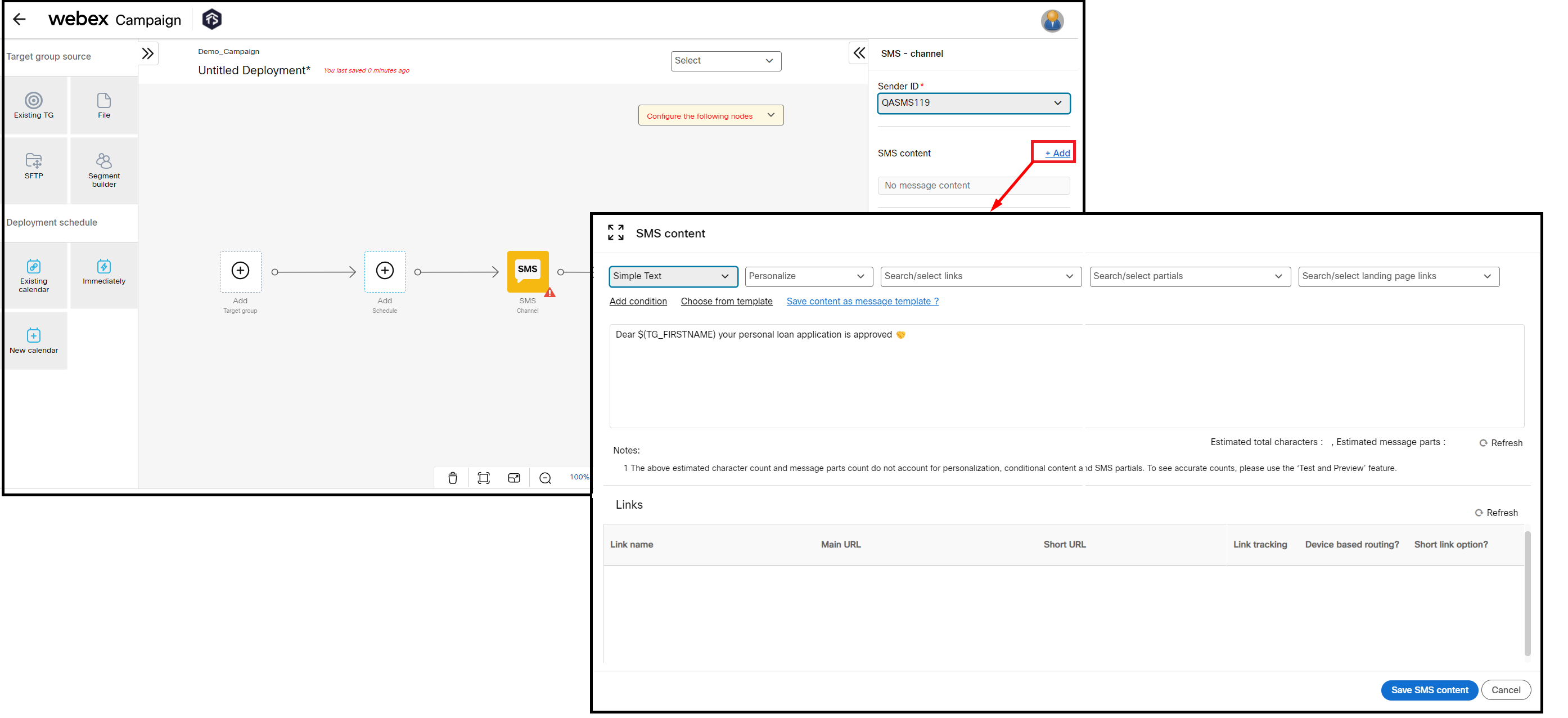
Enter details for the following fields:
SMS Types
The following are the SMS types supported in a deployment:
- Simple Text
- Unicode
- Flash
- Binary
If you select Normal SMS and the SMS content is Unicode text then Webex Campaign will detect ‘Unicode text’ in the SMS content and will show a note to nudge you to choose SMS type as ‘Unicode’ in place of ‘Simple Text’ so the SMS content can render properly on end devices.
SMS Message Parts
Clients in Canada and USA are likely to send SMS messages to a subset of their customers in French or Spanish language. Some characters within these languages are considered ‘special characters’. SMS messages containing such special characters need to be designated as ‘Unicode’ messages and will effectively require extra characters and extra message parts – thus potentially increasing the cost of that SMS campaign substantially. Similar considerations apply if an SMS message contains emojis.
If the system detects special characters or emojis within the SMS content message, then the user will be shown an alert that they need to change the message type from ‘Simple Text’ to ‘Unicode’.
This alert will help you decide whether the additional costs for the SMS message containing special characters or emojis is worth it. If not, then you can reword your message copy to remove the special characters or emojis if they are not needed and reduce your message-send costs.
You will need to click the Refresh button after you have made changes to the message copy to see the updated values of the estimated character count and estimated message parts count.
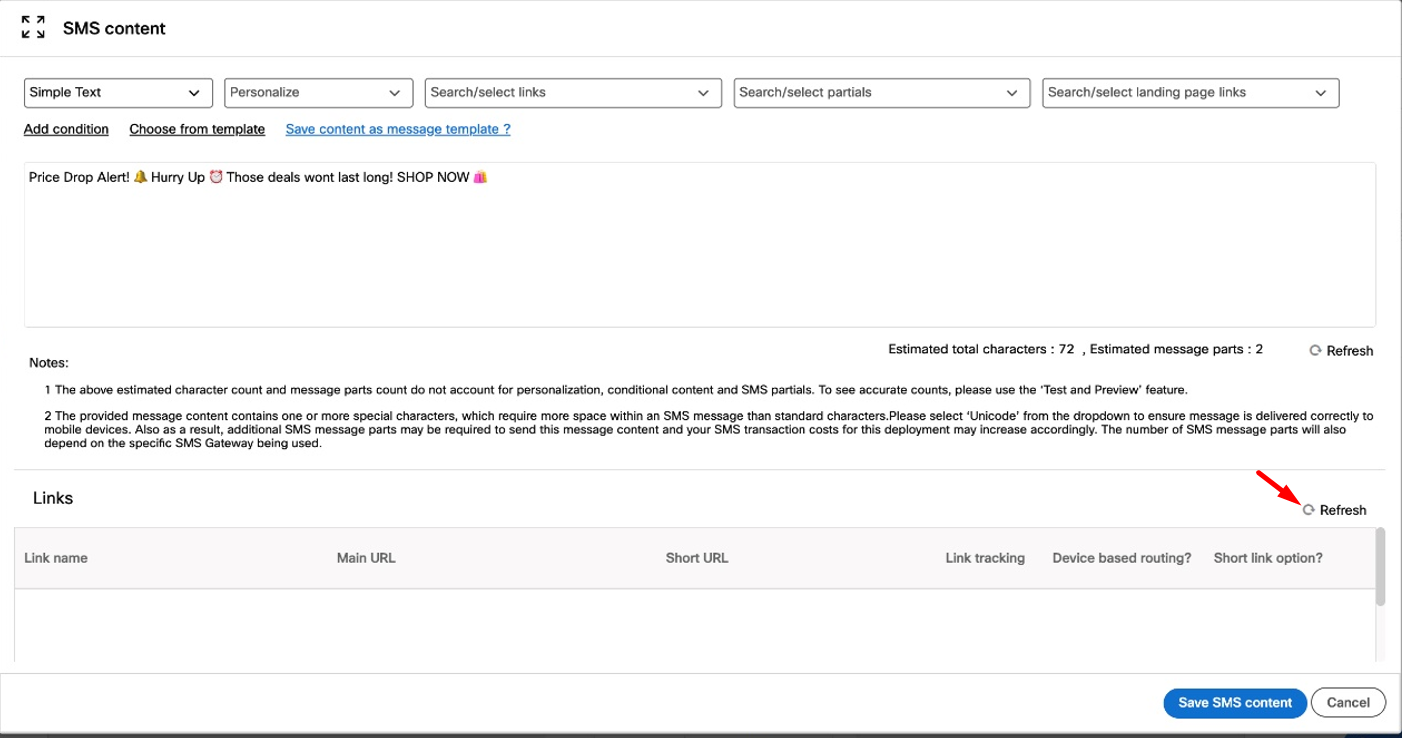
The estimated character count and message parts count do not account for personalization, conditional content, and SMS partials. To see accurate counts, please use the ‘Test and Preview’ feature.
Personalize
Personalization allows you to input individual contact-specific data into the message copy. The drop-down list box displays all the headers available from the data source. Click one of the headers to populate a Personalisation expression, which will pull through the customers’ relevant values from the data file (for example, the customer’s Firstname).
If the Target Group is not readily available, but you know the headers that would be available in the target group, you can enter it as $(TG_
). Enter the header in place of .For example, a sample personalization message can be configured as:
Dear $(TG_FIRSTNAME) your personal loan application is approved 🤝
There are 3 personalization expressions to consider depending on the source of the data:
- Target Group: $(TG_HEADER)
- Profile: $(PR_HEADER)
- Event: $(EV_HEADER)
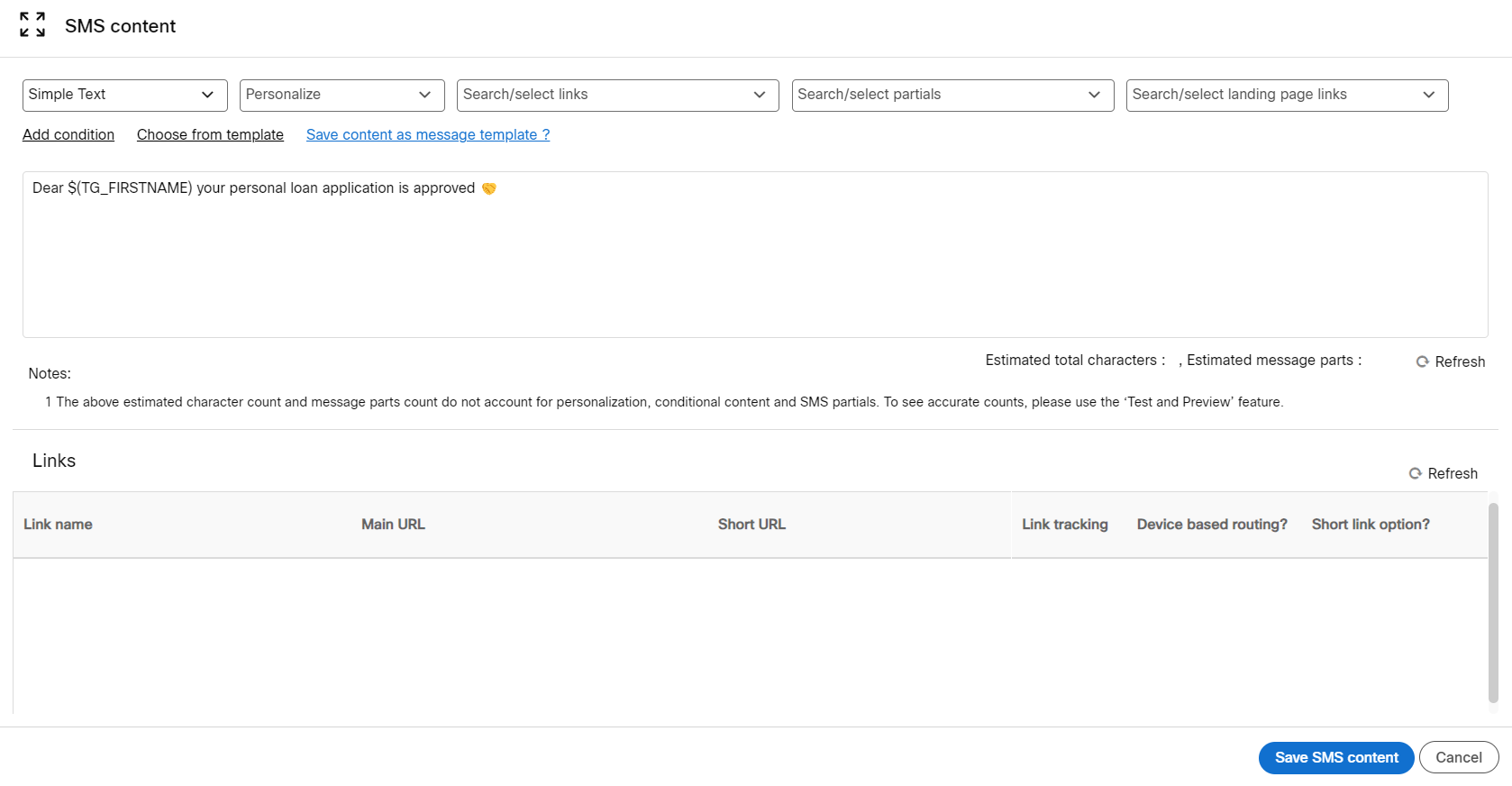
Emojis in SMS Content
Emojis can be used in SMS content when creating the SMS content. Users whose accounts are hosted in AWS-USA and AWS-Canada will be able to include emojis within their SMS messages. This feature is supported only in North America because currently, mobile networks outside of North America do not support the inclusion of emojis within SMS messages. You can preview the Emoji using the Preview and test.
We recommend copying the desired Emojis from a website such as (https://www.emojicopy.com/) and pasting them into the SMS content.
a. The same Emoji may be rendered differently depending on the mobile operating system of the recipient’s device. The web resource (https://home.unicode.org/emoji/) provides many examples of how the same Emoji could be rendered differently across devices and operating systems.
b. Some Emojis may not render at all on certain devices.
Since emojis are considered ‘special characters’, you will need to change the type of SMS message from ‘Simple Text’ to ‘Unicode’ in the dropdown in the top left corner of the SMS content pop-up. As a result, the effective number of SMS message-parts needed to send such a message is at least likely to be double compared to the message-parts needed to send an SMS message without emojis. Please keep these additional costs in mind when using emojis within SMS messages.

We strongly recommend thoroughly testing your message to ensure it renders well across multiple devices, especially because of the wide variations of how Emojis are rendered.
The ‘What’ tab on the ‘SMS Deployment Details’ page on the Dashboard will also display the SMS content including any emojis.
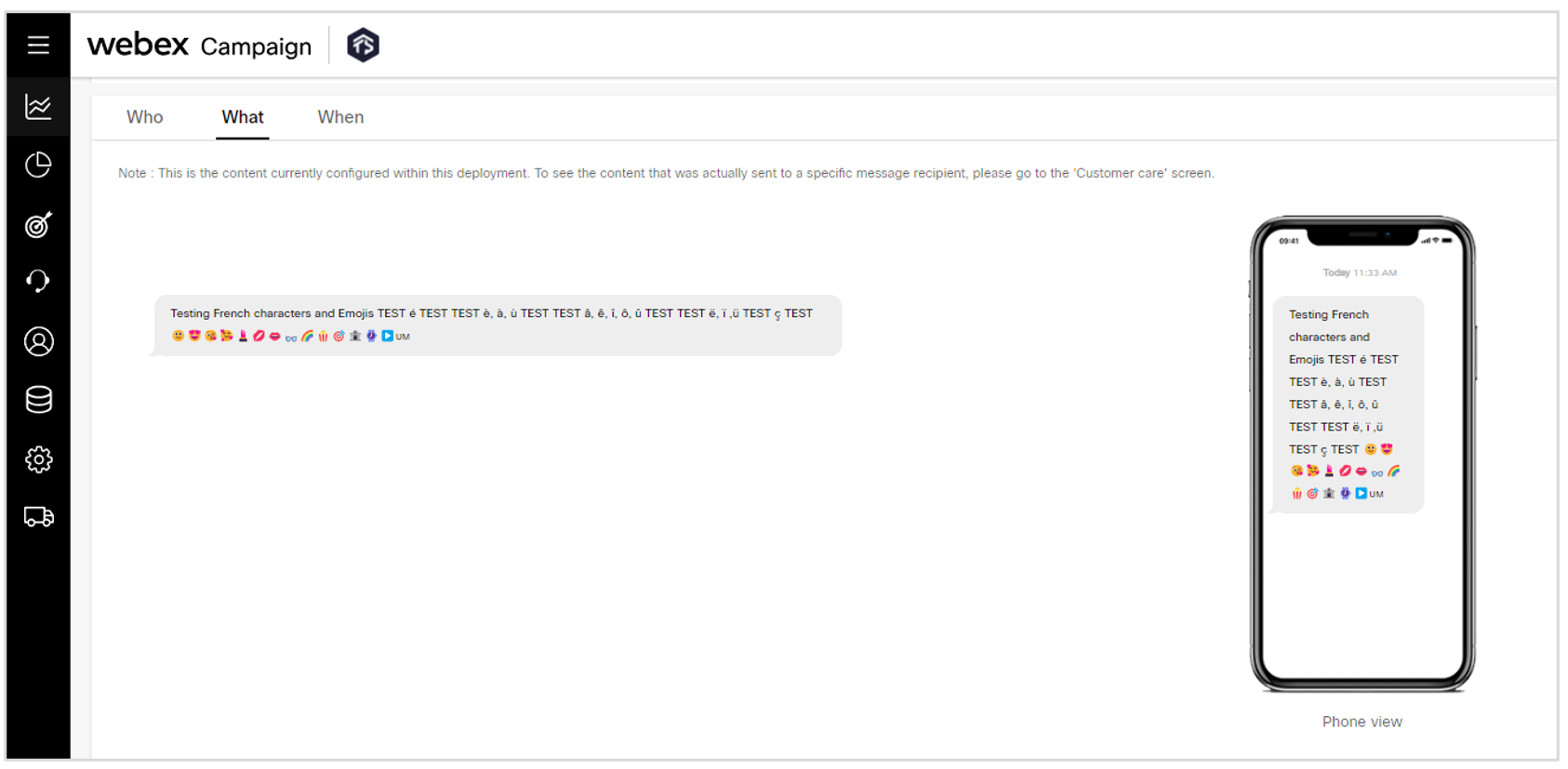
Links
This allows the user to input links that have already been tracked within the Webex Campaign.
. For more information, refer Links section under Assets.
Smart links display in an asset ID format in this box and are changed into a full link upon deployment (for example, {asset_links_14436097700295}).
Partial
This option allows you to insert partial. To insert a partial, key in the partial name in the Partials textbox and select the required partial from the list that appears. For more information on partials, refer SMS Partials section under Assets.
Landing page links
This option allows you to insert landing page links. These links are similar to normal links, but they will have associated landing pages created using the landing page builder.
Add Condition
Webex Campaign allows conditional logic statements to be placed around content within a message.
For more information on Conditional Logic, refer Conditional Logic section.
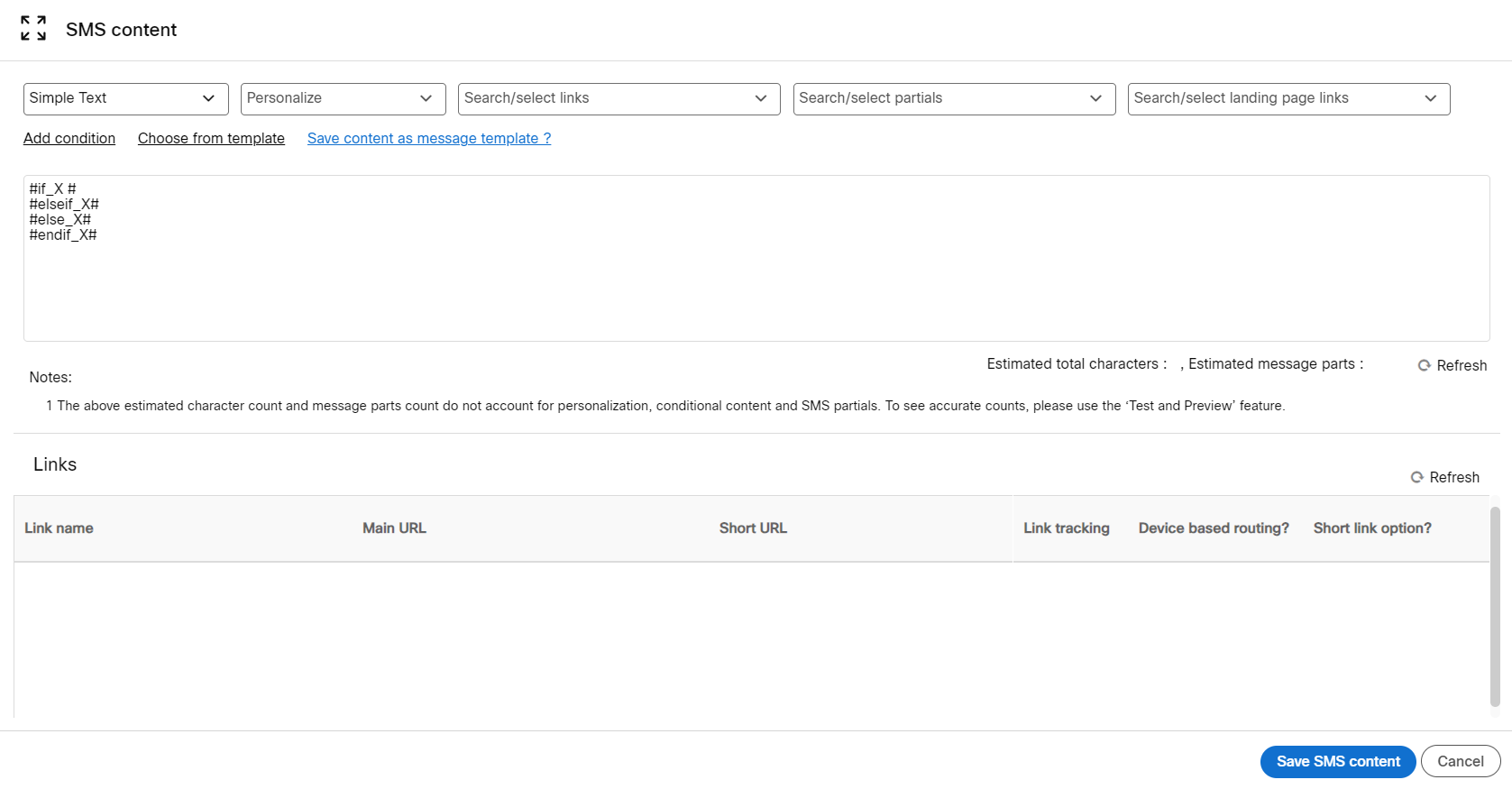
Save content as message template
This option allows you to save the message content as an SMS message template that you can reuse instead of creating a message from scratch.
After composing the message, click on the Save content as message template ? link. A textbox is displayed to enter a name for the template. Enter a desired template name and click Save.
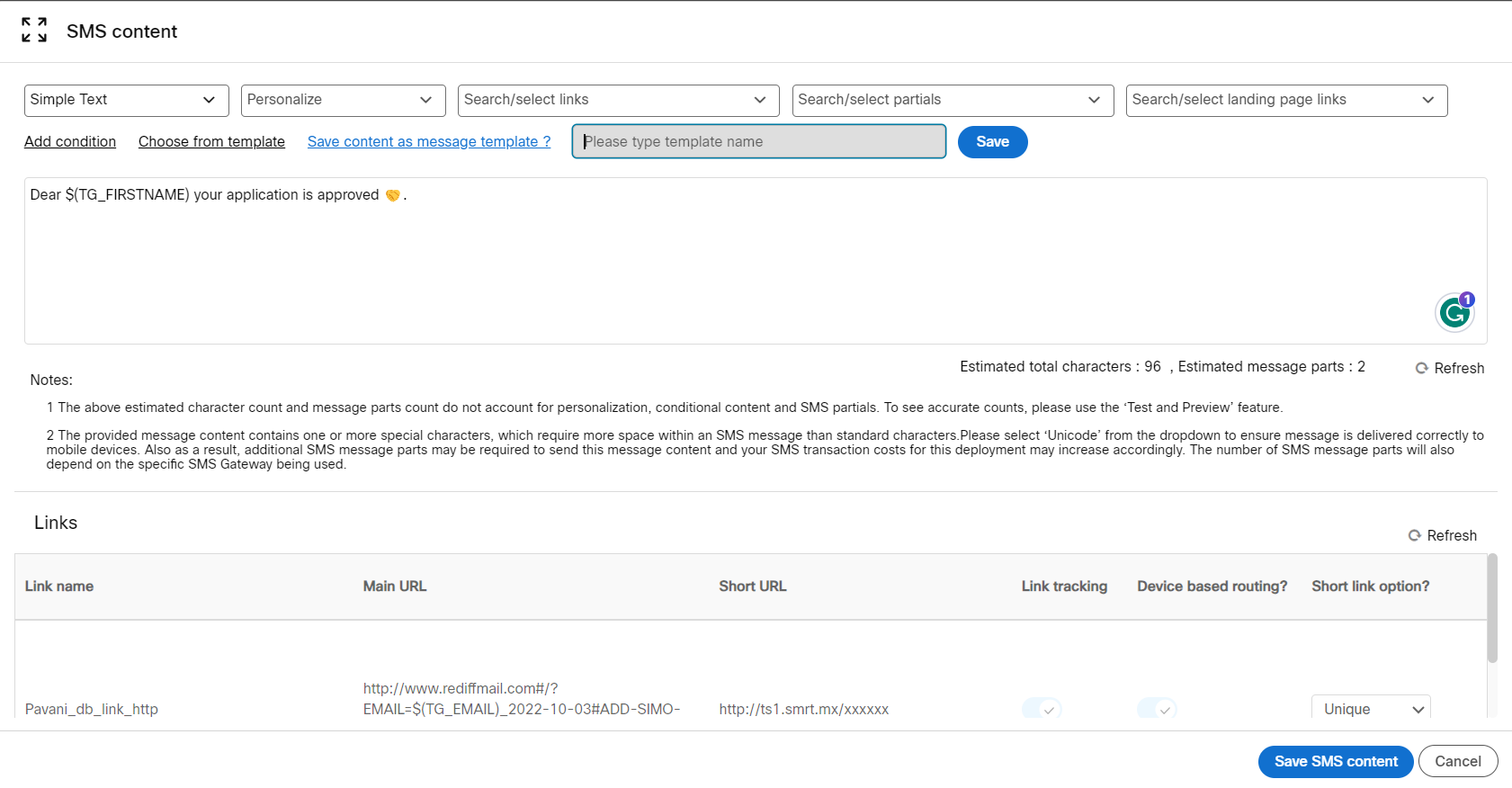
Choose from Template
This option allows you to select an SMS message template, which you have previously saved. To add SMS content using an SMS content template, click Choose from template and select the desired template. You can also preview the content.
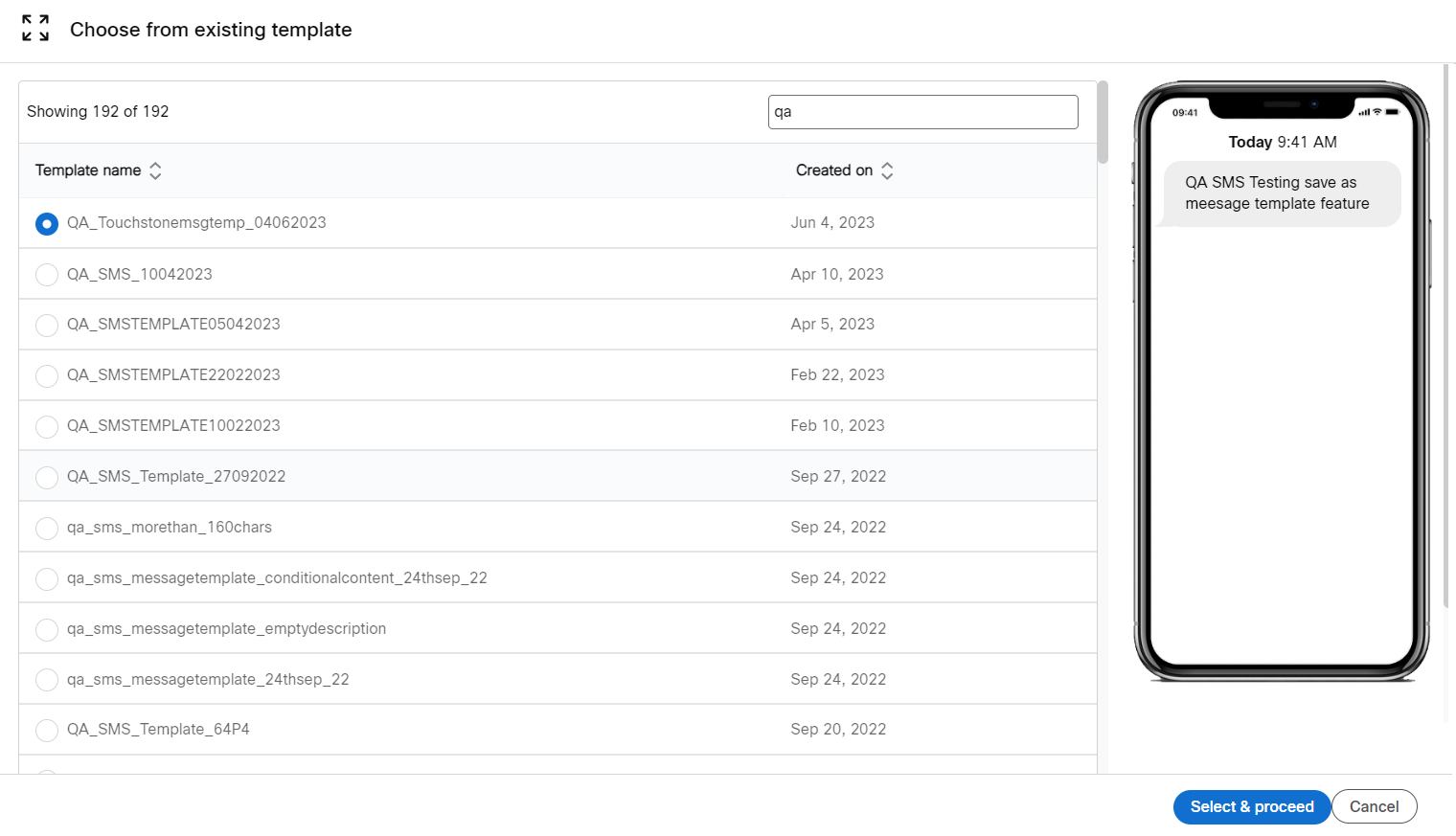
Links
When a link is inserted from the Links dropdown, such links can be tracked other links added cannot be tracked. That means a link that is added without using the links drop-down will not be tracked. You can configure whether the tracked link is unique or common for all contacts and enter the expected CTR for the link.
- Common: Select this option to make the link common for all contacts.
- Unique: Select this option to send a unique link to each customer. A unique 8-digit reference is added at the end of the link automatically. You can generate SMS - MMS Link Clicks Summary report to view the link clicks information of each contact.

- Click Save SMS content.
- You can preview the content that was added and the count of tracked links.
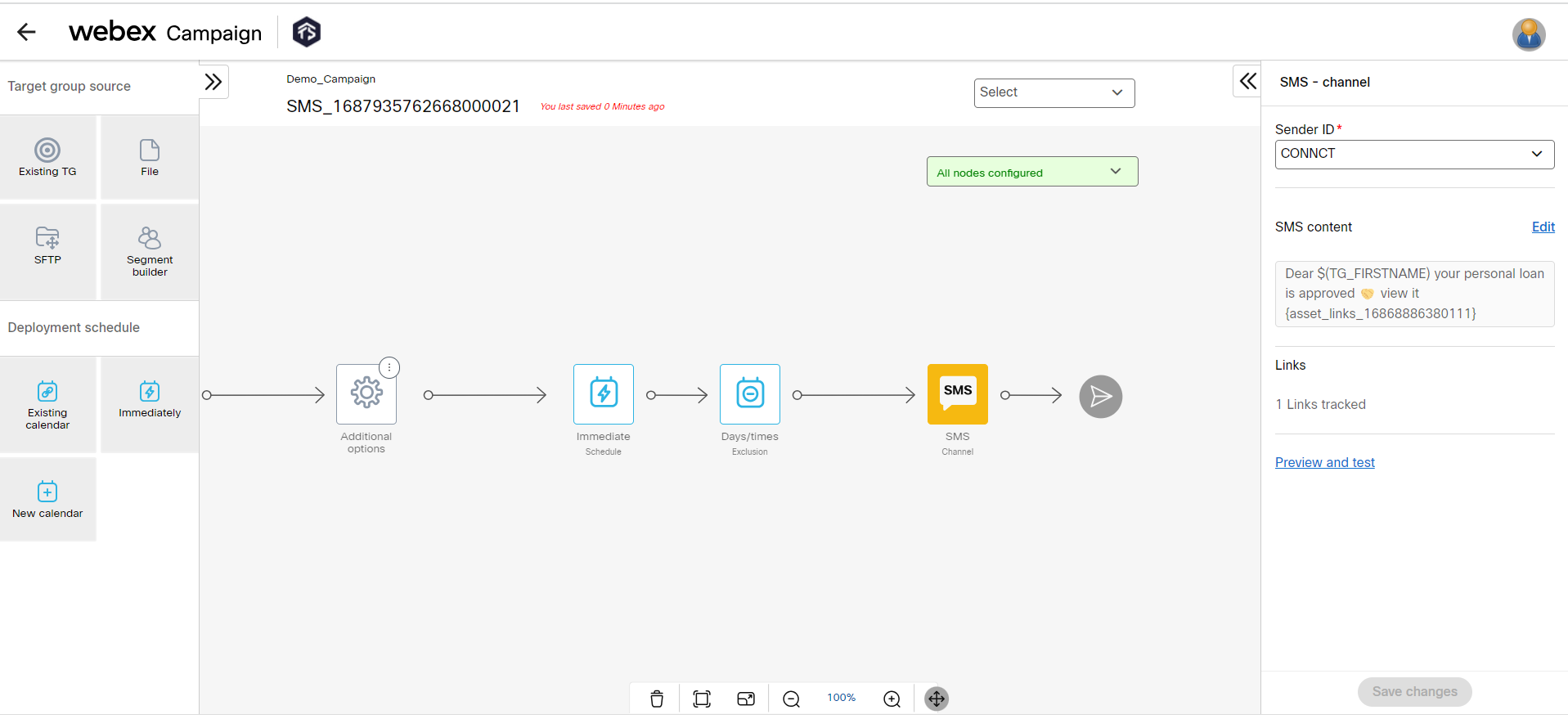
- Click Preview and test to preview the content and send the content to a test contact.
Updated 28 days ago